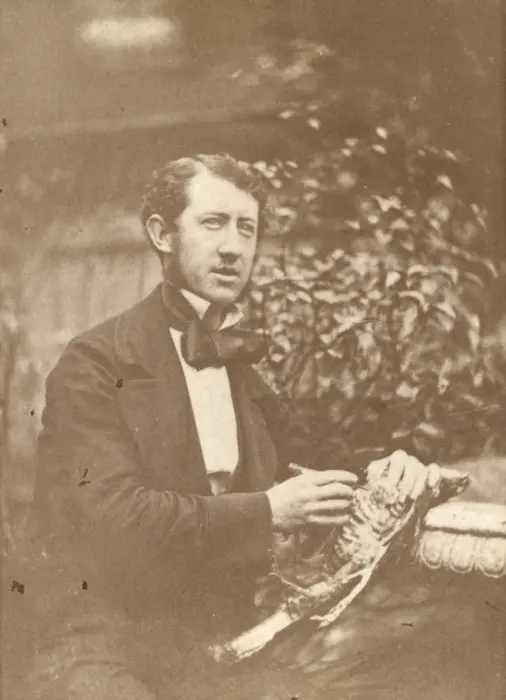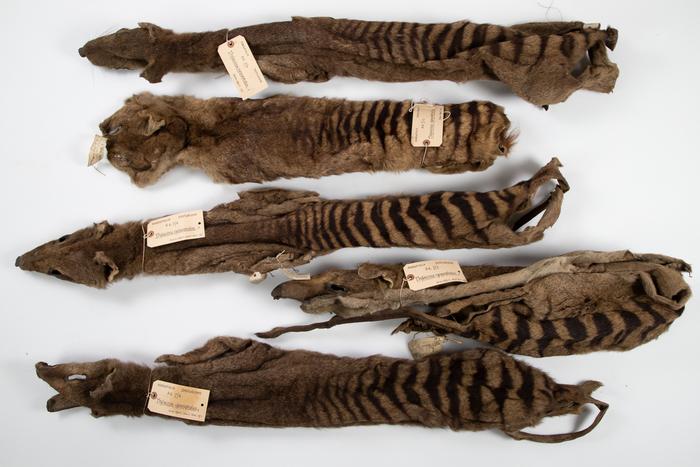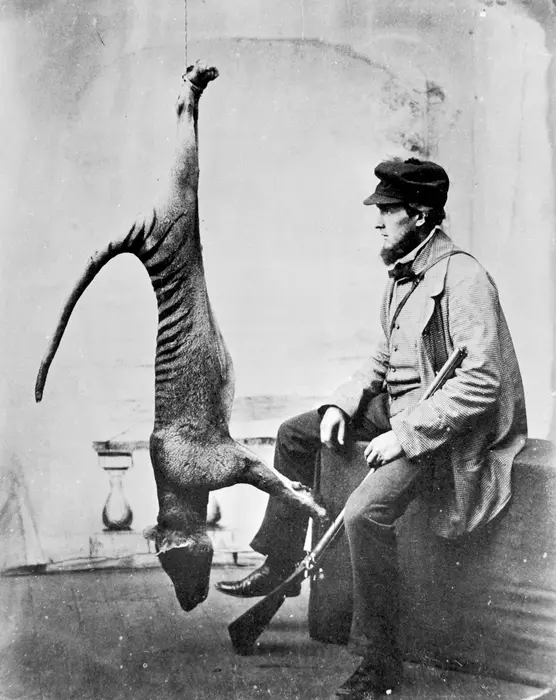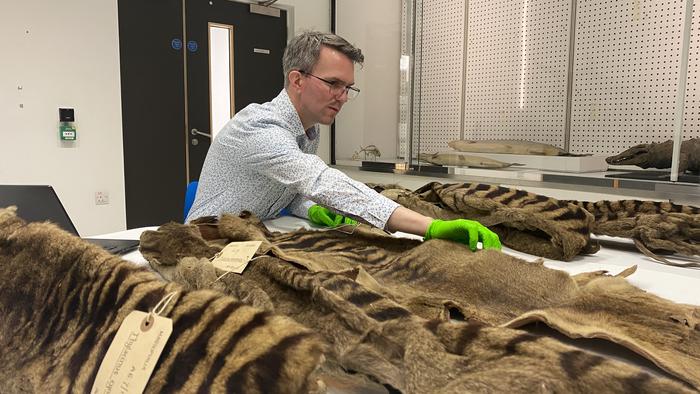Historical violence in Tasmania: Victorian collector traded human Aboriginal remains for scientific accolades, study reveals – Research into the letters of Morton Allport reveals how he built a scientific reputation by exchanging the remains of Tasmanian Aboriginal people and Tasmanian tigers for honours from elite societies.

A Hobart-based solicitor built his reputation as “the foremost scientist in the colony” in the mid-1800’s, despite limited contributions to scientific knowledge.
Morton Allport achieved his status by obtaining the bodily remains of Tasmanian Aboriginal people and Tasmanian tigers, also known as thylacines, and sending them to collectors in Europe – specifically asking for scientific accolades in return.
This took place in the context of a genocide against the Tasmanian Aboriginal peoples, and persecution of the thylacine that eventually led to its extinction.

The new research by Jack Ashby, Assistant Director of the University Museum of Zoology, Cambridge, is based on transcriptions of letters sent by Allport to correspondents in Australia and Europe. It is published today in the Archives of Natural History, the journal of the Society for the History of Natural History.
His research reveals how the human and environmental costs of the colonial project were entwined with practices of natural history.
Ashby spent fifteen months investigating the colonial histories of the Australian mammal collections in Cambridge and other museums. The University Museum of Zoology, Cambridge, holds one of the world’s best-preserved collections of skins of the iconic thylacine.
![Highlighted text reads, “I can assure you that I took no small trouble to see that the bones were disinterred from only from a sp[ot?] where none but Aborigines were buried…]”. Credits: Allport Library and Museum, State Library of Tasmania: Letterbooks of Morton Allport (excerpt from letter to Davis 10/7/1872), ALL19/1/4](https://www.classicult.it/wp-content/uploads/2023/11/Low-Res_3.-Letter-from-Allport-to-Joseph-Barnard-Davis.-Credit-SEE-CAPTIONS-DOC.jpg)
“Early British settlers considered both thylacines and Tasmanian Aboriginal people to be a hindrance to colonial development – and the response was institutionalised violence with the intended goal of eradicating both,” said Ashby.
In the process of reading Morton Allport’s letters, held mainly at the State Library of Tasmania, Ashby found that Allport identified himself as the principal exporter of the bodily remains of Tasmanian Aboriginal people to Europe. Allport did not send any of these remains to the University of Cambridge.
Allport shipped a total of five Tasmanian Aboriginal skeletons to Europe, proudly identifying himself as the most prolific trader in Tasmanian bodily remains. He made clear in his letters that he had directed the grave-robbing himself. The human remains sent by Allport to the United Kingdom are no longer held in British collections – they were either destroyed by bombing during the Second World War or have since been repatriated to Tasmania.
“Allport’s letters show he invested heavily in developing his scientific reputation – particularly in gaining recognition from scientific societies – by supplying human and animal remains from Tasmania in a quid pro quo arrangement, rather than through his own scientific endeavours,” said Ashby.

Ashby’s research has shown that as populations of both thylacines and Tasmanian Aboriginal people were diminished, demand for their remains in museums and private collections increased. Morton Allport worked to meet this demand.
Allport’s exploits included acquiring the remains of an Aboriginal man, William Lanne, considered a “prize specimen” as he was believed by the colonists to be the last Tasmanian man when he died in 1869. The research explains how Allport likely instructed that Lanne’s body be mutilated both before and – following his exhumation – after his burial so that Allport could add him to a museum collection in Hobart.
The events surrounding Lanne’s death have been at the centre of much debate in Tasmania in recent years, and this August it was agreed that a statue of state premier William Crowther – also implicated in the mutilation of Lanne’s body – would be removed from Hobart city centre. But until now Allport’s role has been little explored.
“Outrageously, despite state-sponsored violence committed against thylacines and Tasmanian Aboriginal peoples, they were both described by the colonists as being at fault for what happened to them – that they couldn’t cope in the ‘modern’ world,” said Ashby.

The University of Cambridge’s collection of thylacines, sent from Morton Allport in 1869 and 1871, represent the UK’s biggest collection of this species known to originate from a single person.
Thylacines were the largest marsupial carnivores of recent times. In 1830, British settlers in Tasmania established the first bounties encouraging violence against both Tasmania’s first peoples and thylacines. The last known thylacine died in 1936.
“Specimens like the thylacines in our collection hold extreme power in allowing museums to connect people to this story,” said Ashby.
He added: “Although Allport did not send any human remains to Cambridge, I can no longer look at these thylacine skins without thinking of the human story they relate to. It shows how natural history specimens aren’t just scientific data – they also reflect important moments in human history, much of which was tragically violent.”
Professor Rebecca Kilner, Head of the University’s Department of Zoology, said: “We have a remarkable collection of animals in our museum. We have long appreciated that their natural history can help us understand more about the natural world and how to conserve it. We now realise that the social history behind our collections is just as important.”
She added: “Understanding why and how animals were collected, including the underlying political and social motivations, is key to understanding and addressing some of the social inequalities that exist today.”
A new web-resource sharing the stories behind the collections has been launched today. This work forms part of the University of Cambridge Museum’s inquiries into legacies of empire and enslavement.
Bibliographic information:
Ashby, J: ‘How collections and reputation were built out of Tasmanian violence: thylacines (Thylacinus cynocephalus) and Aboriginal remains from Morton Allport (1830–1878).’ Archives of Natural History, 50.2 (2023), DOI: 10.3366/anh.2023.0859
Press release from the University of Cambridge.


